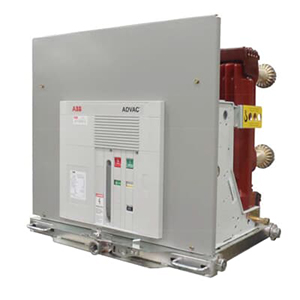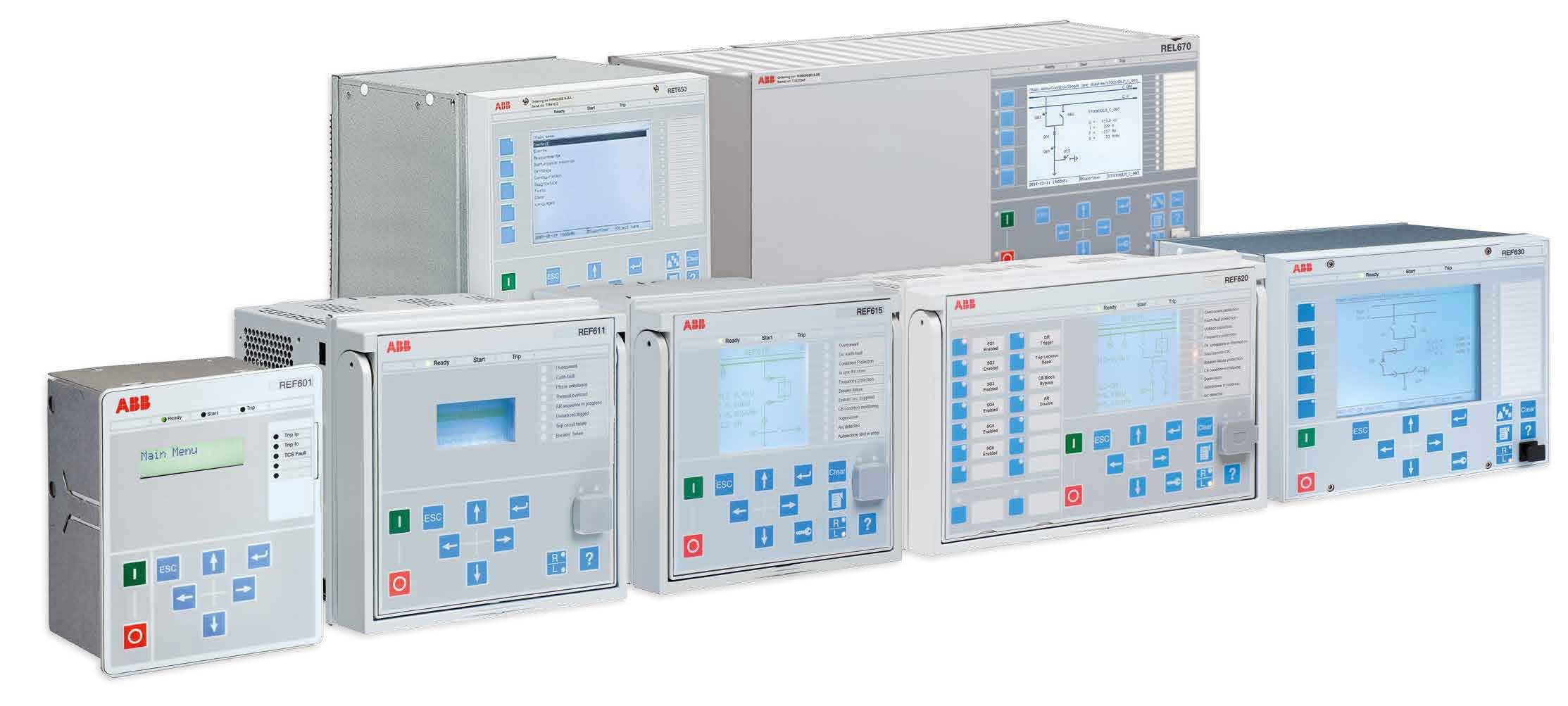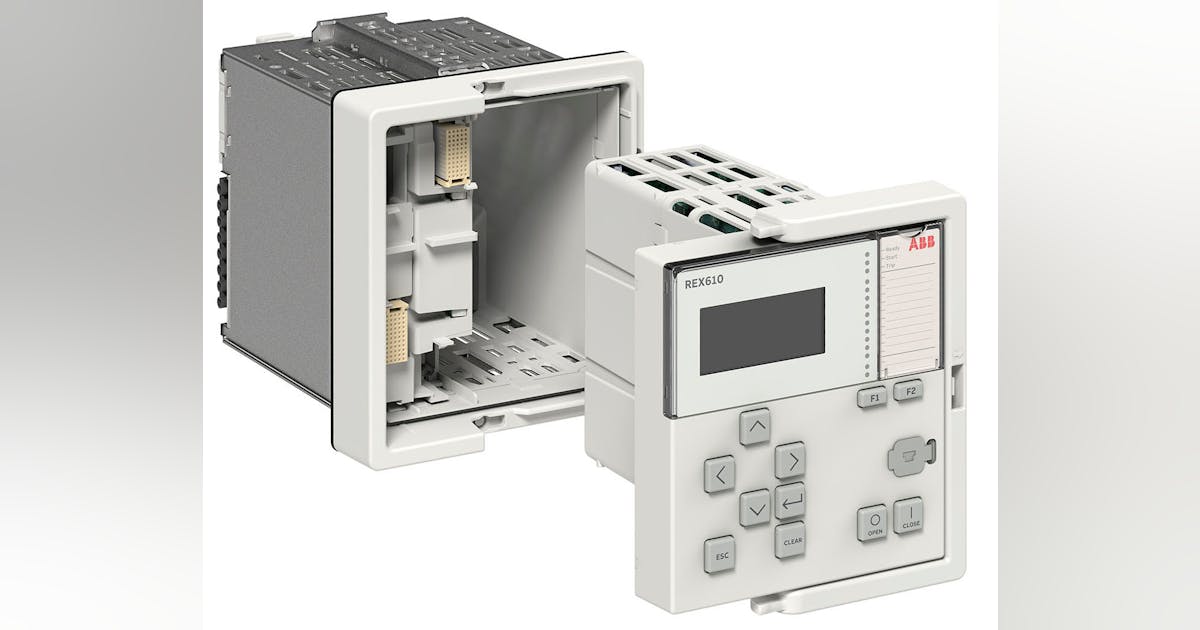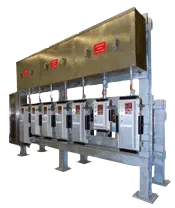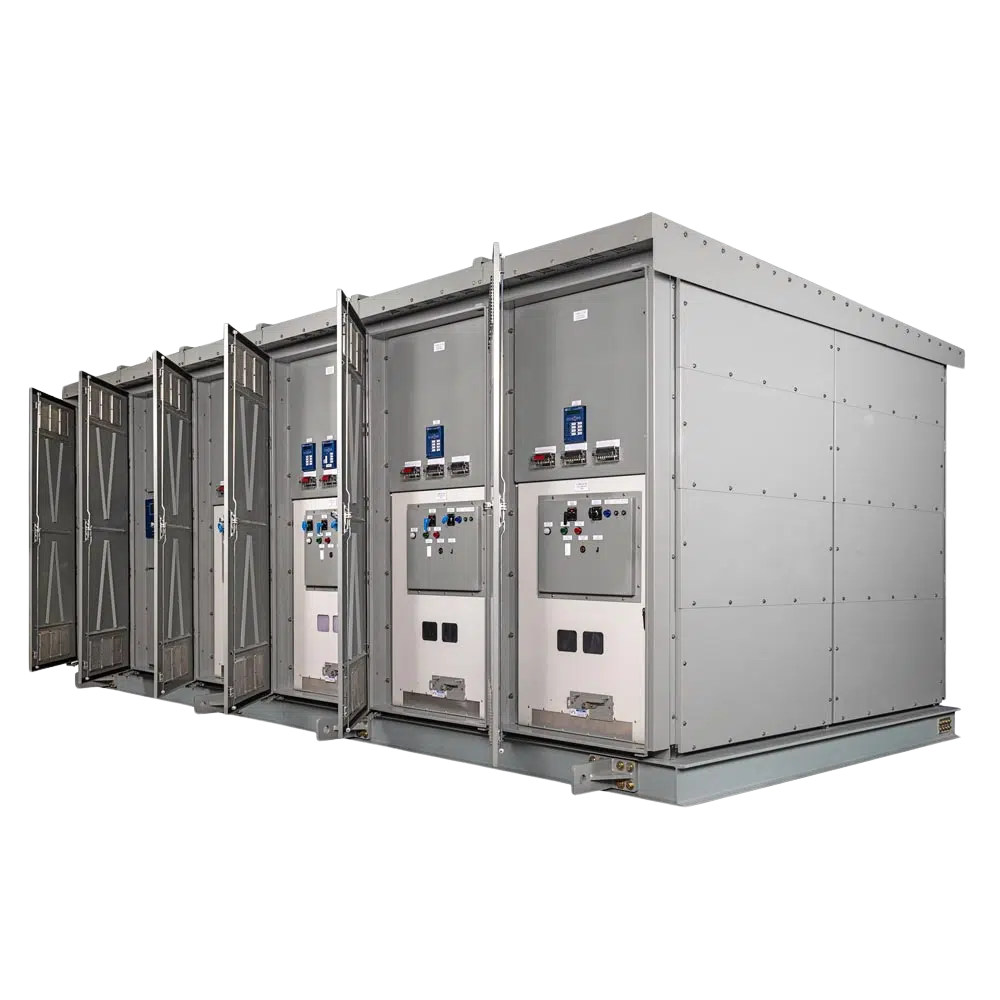
Modern electrical systems are expected to deliver safety, reliability, and performance even under evolving loads and aging infrastructure. Yet for many facilities, the backbone of their power distribution — the switchgear — is decades old. Replacing it outright is often cost-prohibitive, disruptive, or unnecessary. That’s where switchgear conversions come in.
At Spike Electric, we specialize in upgrading legacy systems to meet today’s safety, regulatory, and operational expectations. In this blog, we break down the most common types of switchgear conversions, when they’re appropriate, and how they can extend equipment life while minimizing risk and cost.
What Is a Switchgear Conversion?
A switchgear conversion is the process of upgrading or modifying an existing power distribution system without replacing the entire lineup. These conversions are guided by engineering principles and standards (like IEEE C37.59) to ensure the updated system maintains or exceeds the original ratings for performance, insulation, arc resistance, and short-circuit withstand.
Rather than tearing out entire assemblies, conversions often target critical components: breakers, relays, insulation systems, enclosures, and control panels. Done correctly, these upgrades can extend the life of your gear by 10–20 years or more.
1. Circuit Breaker Retrofits
One of the most common and cost-effective upgrades is retrofitting outdated or unsupported circuit breakers that are no longer manufactured, lack spare parts, or fail to meet modern performance expectations.
What it involves:
- Replacing air-magnetic or oil breakers with modern vacuum or SF6 breakers, which offer faster clearing times and better arc suppression
- Designing and installing cradle adapters or compartment-specific mounting kits to integrate modern breakers into existing cubicles without major structural modifications
- Upgrading secondary disconnects, racking mechanisms, and shutter assemblies to align with the new breaker design and interface
- Evaluating and upgrading auxiliary contacts and wiring for compatibility with modern relays and control logic
Benefits:
-
- Significantly improved electrical and mechanical reliability over outdated breaker types
- Enhanced arc flash mitigation through faster breaker clearing times and superior arc-interrupting technology
- Lower maintenance costs and less downtime due to reduced mechanical wear and no oil/gas handling requirements
- Simplified long-term support and spare part availability
Technical Note: Vacuum circuit breakers offer minimal maintenance and are especially effective for medium-voltage applications. SF6 breakers provide high insulation and interrupting capacity but require proper handling due to environmental concerns. The retrofit design must also maintain original short-circuit ratings, clearances, and coordination settings in line with ANSI/IEEE guidelines.
Best for: Facilities with aging switchgear that remains structurally sound but uses obsolete or unsupported breakers. This includes manufacturing plants, utilities, water treatment facilities, commercial buildings, and institutional campuses. Facilities with aging gear but structurally sound enclosures
2. Arc-Resistant Switchgear Conversions PowerSafe Arc-Resistant Switchgear | Spike & ABB
Arc flash events are among the most dangerous incidents in power distribution systems, posing severe risks to personnel and infrastructure. Converting standard switchgear into arc-resistant switchgear significantly enhances safety but must be done with technical precision and proper certification. It’s important to note that the term “arc-resistant” should only be used when conversions are completed in conjunction with a certified switchgear manufacturer using UL or other NRTL-tested products and methods.
What it involves:
-
- Partnering with a qualified switchgear manufacturer who has certified arc-resistant switchgear designs
- Adding tested and proven arc venting systems with reinforced pressure relief paths
- Installing internal steel barriers, sealed compartments, and arc flash containment channels
- Integrating remote racking devices and control systems to enable safe operation outside the arc flash boundary
- Installing a UFES (Ultra-Fast Earthing Switch) system and relay-based protection coordination to further mitigate arc flash duration and intensity
Critical Safety and Compliance Note: Switchgear cannot legally or accurately be labeled as “arc-resistant” unless it has undergone type testing by a recognized Nationally Recognized Testing Laboratory (NRTL) such as UL or Intertek (ETL). These tests validate safe arc gas release paths and structural integrity under fault conditions. Contractors, testing companies, or even licensed professional engineers cannot upgrade or certify equipment as arc-resistant unless they are working directly with a certified switchgear manufacturer during the testing and retrofit process.
Benefits:
-
- Maximum safety enhancement through proven containment and mitigation technology
- Compliance with modern arc flash standards (NFPA 70E, IEEE 1584, ANSI C37.20.7)
- Lower PPE requirements and reduced risk for operations and maintenance personnel
Best for: Facilities with medium- or high-voltage switchgear that present high incident energy levels or personnel exposure risks. Ideal for utilities, refineries, data centers, and industrial plants requiring elevated protection without full system replacement. Facilities with high incident energy levels or personnel safety concerns
3. Relay and Protection System Upgrades
Modernizing the protective relay systems within switchgear assemblies is one of the most strategic upgrades facilities can implement to improve safety, system reliability, and automation. Legacy relays — whether electromechanical or early-generation solid-state units — are limited in both precision and flexibility. Today’s digital microprocessor-based relays offer vastly improved protection logic, communication capabilities, and response times.
What it involves:
-
- Removing outdated relays and replacing them with modern microprocessor-based protection relays
- Rewiring and reprogramming protection schemes to accommodate new functions, including advanced coordination, zone interlocking, and event recording
- Integrating with SCADA, building management systems, or standalone power monitoring platforms
- Installing UFES (Ultra-Fast Earthing Switch) systems in conjunction with relays to reduce arc flash energy levels within the switchgear during fault conditions
- Ensuring protection upgrades align with current IEEE, ANSI, and NFPA codes, and that short-circuit studies are updated accordingly
- Performing arc flash assessments and coordinating protective devices to ensure selective tripping
Spike Electric Advantage: Unlike many field service or engineering firms, Spike Electric is capable of performing all mechanical and electrical integration work in-house. We also offer custom sheet metal door fabrication to accommodate new relay cutouts, displays, or remote racking controls. Most contractors must outsource this portion to metal shops or OEMs, creating delays and inconsistencies. Spike provides full mechanical and electrical CAD drawings to support retrofit relay layouts, helping engineers and owners visualize the retrofit before execution.
Benefits:
-
- Faster, more accurate fault detection and isolation, reducing damage and downtime
- Improved protection logic and adaptability to evolving load profiles
- Enhanced system diagnostics and logging for root cause analysis
- Reduced incident energy exposure through UFES systems and intelligent relay-based trip coordination
- Consolidated upgrade execution under one qualified provider, reducing complexity and risk
Best for: Facilities seeking to modernize their switchgear’s protection capabilities, reduce arc flash hazards, and gain greater visibility into system health. Ideal for critical power applications, industrial process control, utilities, and any organization undergoing electrical modernization initiatives. Facilities seeking better fault analysis, automation, or reliability improvements
4. LV to MV Switchgear Conversions
As facility demands increase due to growth or added equipment, a low-voltage switchgear lineup may no longer meet capacity, protection, or safety requirements. In these cases, converting from low-voltage (LV) to medium-voltage (MV) switchgear is a powerful solution that significantly increases the system’s performance capabilities and lifespan.
What it involves:
-
- Retiring or modifying low-voltage switchgear compartments and bus structures to accommodate new MV-rated components
- Installing medium-voltage-rated circuit breakers, current transformers (CTs), potential transformers (PTs), and protection relays that meet ANSI and IEEE standards
- Ensuring all conversions meet required MV insulation, clearance, and grounding specifications
- Conducting space planning and clearance evaluations at the outset of the project to ensure compliance with MV safety and ventilation requirements
- Evaluating and implementing arc flash mitigation strategies, including the addition of UFES (Ultra-Fast Earthing Switch) systems coordinated with digital relay protection
Consultation Requirements: This type of conversion often requires upfront consulting and engineering due to the increased footprint and arc flash risk of MV systems. MV switchgear installations must also account for phase spacing, internal arc containment, and environmental clearances. Spike Electric provides these design services internally to streamline planning and avoid construction phase delays.
Spike Electric Advantage: Most contractors and consultants do not offer in-house design, layout, and fabrication services for LV to MV conversions. At Spike Electric, we support this transformation from start to finish. Our engineering team supplies full construction-ready drawings and layout options that address real-world space constraints and operational needs.
Benefits:
-
- Increased power capacity to support larger loads and infrastructure
- Enhanced protection using MV relays and coordinated breaker systems
- Improved operational efficiency and reliability at scale
- Future-proofed power distribution architecture
Best for: Industrial facilities, manufacturing plants, utilities, and data centers planning capacity expansion or upgrading older infrastructure to modern medium-voltage standards. Industrial plants, data centers, or utilities scaling up operations
5. Compartment Adapter Conversions
Operating Guide – Cutting tool for REF 542plus HMI
Not all switchgear retrofits are plug-and-play. Legacy switchgear designs often vary in size, breaker mounting configurations, and interface geometry. This means custom compartment adapters are frequently required to properly and safely retrofit modern breakers or devices into older switchgear lineups.
What it involves:
-
- Designing and fabricating structural compartment adapters for legacy switchgear frames
- Reinforcing or modifying existing enclosures and mounting structures to meet updated mechanical strength and electrical safety standards
- Preserving original or updated mechanical interlocks and ground-fault pathways to ensure safe operation
- Addressing door, hinge, and latch compatibility for upgraded breaker access and visibility
Engineering and Fabrication Considerations: Because many OEMs no longer support older switchgear models, most service providers must outsource the design and fabrication of adapter kits. Spike Electric eliminates this delay and complexity by offering in-house design, engineering, and sheet metal fabrication. We deliver full CAD drawings, structural analysis, and fitment verification, all under one roof. Our adapter kits are purpose-built to the specific frame, switchgear brand, and breaker model being retrofitted.
Benefits:
-
- Reuses the existing switchgear frame and cabinet, dramatically reducing costs
- Avoids the need for structural demolition, welding, or field modifications
- Reduces lead times through consolidated in-house production and support
- Ensures mechanical safety and regulatory compliance throughout the conversion
Best for: Older switchgear models no longer supported by the original equipment manufacturer (OEM), especially when breaker replacements or modern protection upgrades are required but full switchgear replacement is impractical or cost-prohibitive. Older switchgear models no longer supported by the OEM
6. Control Panel and Operator Interface Upgrades
Operators today expect clear, safe, and easy-to-use interfaces. Conversions can replace outdated mimic panels, switches, and meters with modern equivalents.
What it involves:
-
- Replacing analog meters with digital displays or HMIs
- Installing updated push buttons, selector switches, and pilot lights
- Retrofitting remote racking or touchscreen interfaces
Benefits:
-
- Better visibility and safer interaction
- Streamlined troubleshooting and diagnostics
- Integrates with modern communication protocols
Best for: Facilities looking to modernize controls without total system replacement
How to Determine the Right Conversion
The best conversion depends on:
-
- Age and condition of existing gear
- Spare part availability
- Risk tolerance and arc flash profile
- Compliance gaps with UL, NEC, OSHA, or IEEE
- Expansion plans or load changes
At Spike Electric, we start with a thorough assessment, site inspection, and engineering review. We identify what needs to be replaced, what can be safely reused, and what conversion path offers the most value.
Benefits of Converting vs. Replacing
-
- Cost savings of 30–70% vs. full replacement
- Reduced downtime compared to full tear-outs
- Faster project timelines
- Preservation of existing wiring and footprint
- Compliance and performance boosts without total disruption
Conversions aren’t a shortcut — they’re a strategic investment.
FAQs
What is a switchgear conversion?
A switchgear conversion is an upgrade to an existing power distribution system that replaces outdated components while preserving the main structure, improving performance and safety.
Can old switchgear be upgraded?
Yes. Most legacy switchgear can be upgraded using breakers, relays, and control systems that are engineered to fit and tested to meet modern safety standards.
Why convert instead of replace switchgear?
Conversions offer cost savings, shorter project times, and minimal disruption while extending the life of your gear and bringing it up to modern codes.
What types of switchgear conversions are available?
Common conversions include breaker retrofits, arc-resistant upgrades, relay replacements, compartment adapter installs, and LV to MV transitions.
Who should perform switchgear conversions?
Only qualified switchgear manufacturers or field service teams with experience in UL/IEEE/NRTL compliance and switchgear design should perform conversions.
Final Word
Switchgear conversions give you the power of modern infrastructure without the cost or chaos of full replacement. But they require deep engineering knowledge, precision execution, and a safety-first mindset.
That’s where Spike Electric comes in. We don’t just replace parts — we engineer lasting solutions.
Want help planning your switchgear conversion? Reach out. Let’s build it right, the first time.

